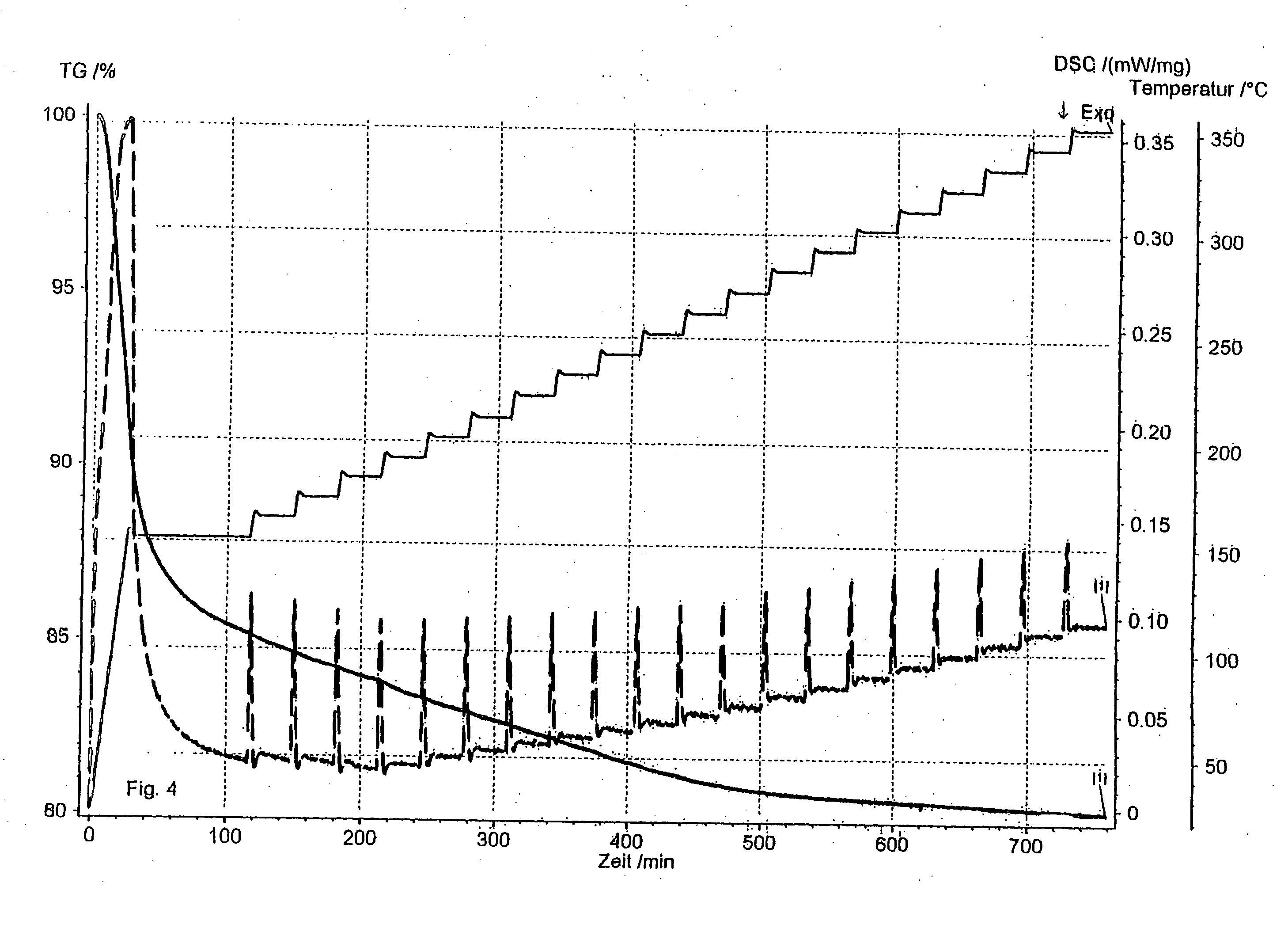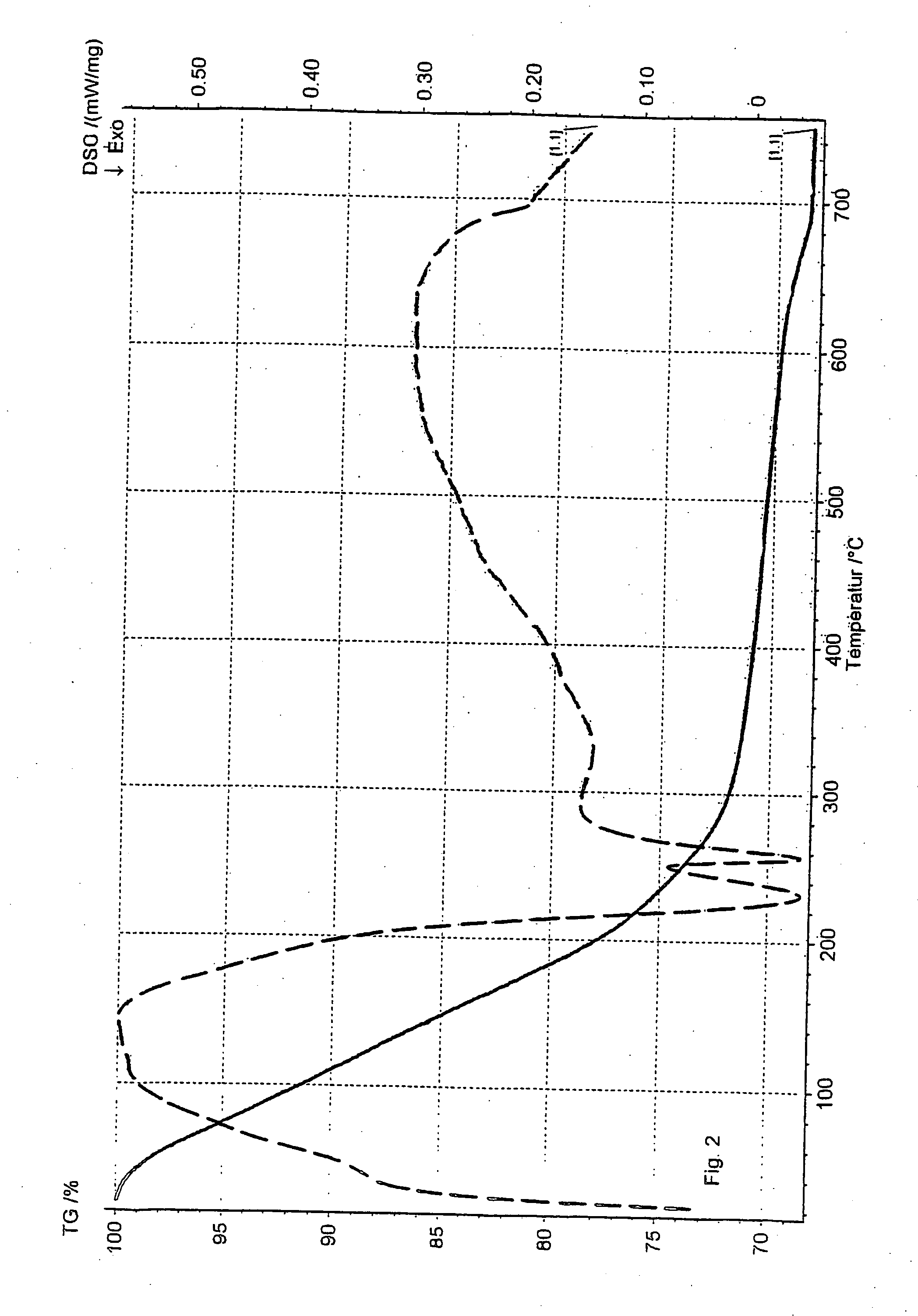Method for sulfur compounds removal from contaminated gas and liquid streams
a technology of sulfur compounds and contaminated gas and liquid streams, which is applied in the direction of hydrocarbon purification/separation, combustible gas purification/modification, hydrocarbons, etc., can solve the problems of damage to technological equipment and transportation systems, gas and liquids containing even a very small amount of sulfur compounds, and strong and unpleasant odor of organic sulfur compounds, etc., to achieve enhanced adsorption capacity and facilitate regeneration
- Summary
- Abstract
- Description
- Claims
- Application Information
AI Technical Summary
Benefits of technology
Problems solved by technology
Method used
Image
Examples
example 1
According to the Invention
[0067] 2250 g of zeolite 13X filter cake, obtained from Zeochem AG, Uetikon, Switzerland, which had a moisture content of 25%, was mixed with 320 g (dry base) of an attapulgite binder and 25 g of tetrasodium diphosphate. This mixture was moistened further with water and mixed in a laboratory scale Eirich mixer R02 to get zeolite beads. The green beads were sieved to a fraction of 1.6-2.6 mm, dried at 100° C. and then calcined at 620° C. for one hour. The calcined material was cooled to room temperature and then stored in an air tight container.
example 2
Prior Art
[0068] A sample of about 2 g of commercially available beaded molecular sieve 13X (Zeochem AG, Uetikon, Switzerland; brand name molecular sieve Z10-03) was put in a desiccator and loaded with ethyl mercaptan at a temperature of 25° C. The fully loaded molecular sieve was put in a small alumina crucible of a TGA instrument and the temperature programmed desorption was recorded. At the same time the energy flow was determined and the DSC curve recorded.
[0069] The desorption was done under ambient air and with a temperature increase of 5° C. / min. A strong exothermic reaction was observed at about 225° C., indicating that the mercaptan undergoes a degradation reaction. The result is also shown in FIG. 1.
example 3
Prior Art
[0070] As example 2, but the desorption was done with nitrogen as a desorption gas and with a temperature increase of 5° C. / min. An exothermic reaction was observed at 220-250° C. The result is also shown in FIG. 2.
PUM
| Property | Measurement | Unit |
|---|---|---|
| weight percent | aaaaa | aaaaa |
| weight percent | aaaaa | aaaaa |
| weight percent | aaaaa | aaaaa |
Abstract
Description
Claims
Application Information
 Login to View More
Login to View More - R&D
- Intellectual Property
- Life Sciences
- Materials
- Tech Scout
- Unparalleled Data Quality
- Higher Quality Content
- 60% Fewer Hallucinations
Browse by: Latest US Patents, China's latest patents, Technical Efficacy Thesaurus, Application Domain, Technology Topic, Popular Technical Reports.
© 2025 PatSnap. All rights reserved.Legal|Privacy policy|Modern Slavery Act Transparency Statement|Sitemap|About US| Contact US: help@patsnap.com



